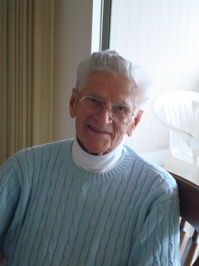 Robert Howard received his B.A. in 1942, his M.D. in 1945, and his Ph.D. in 1952, all from the University of Minnesota. He completed a residency in internal medicine at the University of Minnesota Hospital. He joined the faculty of the Department of Medicine in 1948 and served as associate dean of the Medical School from 1957 to 1958. From 1958 until 1969, Howard served as Dean of the College of Medical Sciences.
Robert Howard received his B.A. in 1942, his M.D. in 1945, and his Ph.D. in 1952, all from the University of Minnesota. He completed a residency in internal medicine at the University of Minnesota Hospital. He joined the faculty of the Department of Medicine in 1948 and served as associate dean of the Medical School from 1957 to 1958. From 1958 until 1969, Howard served as Dean of the College of Medical Sciences.
Interview Abstract
Robert Howard begins with briefly discussing his childhood, his schooling, and his experience in the Army Medical Corps. He then reflects on teaching and working in the Department of Medicine at the University of Minnesota in the 1940s and 1950s, including the changes that he observed in medical care providing after World War II. He discusses his administrative roles at UMN, including director of the Department of Continuation Medical Education, associate dean of the Medical School, and then dean of the College of Medical Sciences. He discusses the faculty private practice controversy in the 1960s, including the option of a strict full-time system. He describes his role in the reorganization of the Pharmacology Department, the establishment of the Ophthalmology Department, and appointing John Najarian as head of surgery after Owen Wangensteen retired. He discusses the increase in the Medical School class size in the 1960s, the attempted establishment of a medical school in St. Paul, the establishment of a medical school in Duluth, and the establishment of the Academic Health Center. He discusses the Nursing and Pharmacy Schools and some of his department head appointments while he was dean. He describes what he did after leaving the UMN, including working as director of Medical Education at Northwestern Hospital in Minneapolis and as editor in chief of Postgraduate Medicine Magazine. He reflects on the state of the funding of medical education in Minnesota while he was dean, the influence of the introduction of Medicare and Medicaid, the influence of federal legislation on the Medical School in the 1950s and 1960s, the perceived shortage of healthcare workers in the 1960s, issues of space in the Medical School, the role of external committees and reports in Medical School decisions, the relationships between the Medical School and local physicians, the state legislature, the Regents, and the Mayo Clinic.
Biographical Sketch
Robert Howard was born in St. Paul, MN, on December 25, 1920. He did his entire post-secondary education at the University of Minnesota, where he received his BA in 1942, his MD in 1945 and his Ph.D. in 1952. He served his internship and residency in the University Hospital. Howard was a Teaching Fellow (1945-46), an Instructor (1948-52), an Assistant Professor (1952-53), Associate Professor (1953-58) in the Department of Internal Medicine; a Professor (1958-82) and a Clinical Professor (1982-) in the Department of Medicine; the Director of the Department of Continuation Medical Education (1952-57); Associate Dean of the Medical School (1957-58); and Dean of the College of Medical Sciences (1958-69). He also served as a captain in the Army Medical Corps in 1946-48, the Director of Medical Education at Abbot-Northwestern Hospital (1971-82), and Editor-in Chief of Postgraduate Medicine Magazine.
Interview Transcript
RHoward.pdf